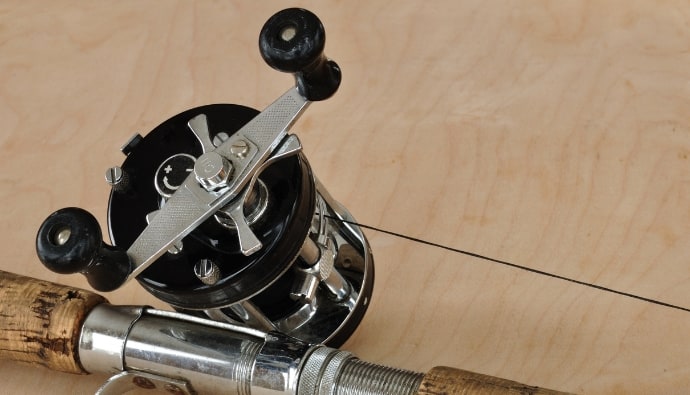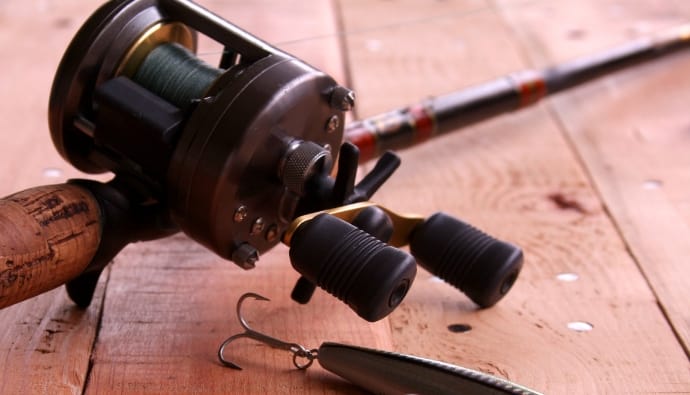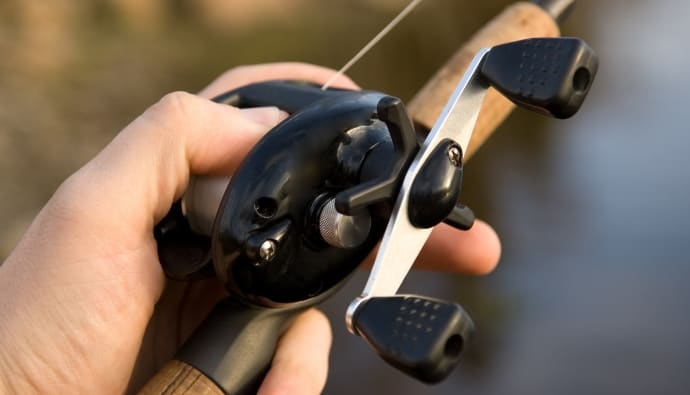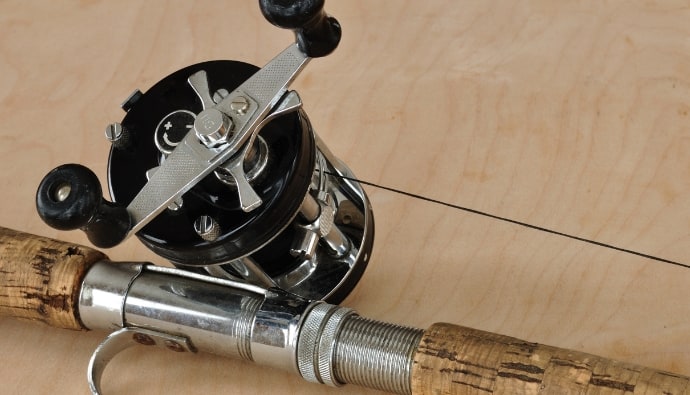Baitcasting reels have many benefits, including allowing more control over the lure – you are able to slow down the lure, making it fall softly into the water without alerting the fish. Baitcasting reels also offer you greater casting ability and a higher degree of casting accuracy and work great with heavy lures.
Every fisherman should strive to have a baitcasting reel because it saves you energy, is quite affordable, and is available in simple but detailed manuals. Overall, a baitcaster reel is a versatile and powerful tool that can enhance any angler’s performance.
Here are the explained benefits of baitcaster reel.
5 Benefits of a Baitcaster Reel
1. Improves Casting Distance and Accuracy
The main advantage of using a baitcaster is that it allows you to control the fishing string entirely other than spinning reels. In the end, you will get greater and more accurate distance during bass fishing.
This will help you save time and energy and get the best out of your nearby fish. It will have pinpoint accuracy even when used in longer casts.
2. Allows More Control Over the Lure
When using a baitcaster, an angler easily gets the appropriate eye contact with their fishing lure. This is quite beneficial while using your baitcaster on the free pool. It ensures cast control and better line control during angling.
It will make a big difference to help you know the strikes while bringing out the cord. You will also know where your chum is, making you strain less and have better line control and cast control.
3. It Is Easier to Handle Heavier Chums and Lines
A good baitcaster handles heavier chum and lines without damaging them. It will enable you to put your chum, for it steadily gets into the salt water without pouring it out.
It also prevents the CORD from scaring the fish around. That’s why baitcasters are beneficial when flipping baits into covers.
4. Provides a Good High-Drag Cranking Power
The baitcaster usually provides appropriate cranking power for any kind of high-drag baits like the ones of crankbaits and spinnerbaits. It is vital to understand that a baitcaster is made to cast a massive cord well than any spinning reel of the same size.
As an angler, you can catch fast-moving bass and allow slack in a string of fish like blackfin tuna, kingfish, and bonefish because of the high-drag power.
5. Provides a Variety of Gear Ratios for Different Retrieve Speeds
The gear ratio in a baitcaster mainly stands for the speed at which it reels in your fishing cord. It is also called the cord recovery rate.
It helps an angler with various ratios for different retrieve speeds for an outstanding fishing experience. In the case of a baitcaster, the balance is 5.2, describing the number of complete times it rotates with one handle switch.
So the more the gear ratio, the faster your fishing cord is retrieved and vice versa. Additionally, a good ratio is effective and helps an angler reduce fatigue. For a medium gear ratio, it will help you lure bass both quickly and slowly, which is also okay.
Why Anglers Must Have Baitcasters
Below are various reasons why you should use baitcasting reels. Take a look.
- They help you save energy while fishing, just like spinning reels.
- They are not heavy and, therefore, light in your arms when carrying out bass fishing.
- They are simple to use.
- You can get them for a small fee. Cost approximately as spinning reels.
- Beginner friendly. They have comprehensive manuals you can use, no matter the reel type.
- There is not much difference between them and spinning reels when it comes to angling and spinning tackle.
Getting to Know Your Baitcast Reel
As much as baitcaster reels have numerous benefits, anglers should get to understand their reels to enjoy angling and get these benefits.
Ignoring baitcasters and how they work will make you know less and waste time when carrying out bass fishing applications. Well, there are low-profile baitcasters. They may differ from spinning reels or other reels that function in salty water.
You will have to do some tweaking to get them functioning at their best. Below we share some facts about them. Have a look.
- They come with a handle side just opposite the spinning reel for angling.
- For the palm side, it well fits the left.
- For the right-handed baitcaster, you will find the handle on its right side.
- The left-handed baitcasters come with a handle on their left side.
How to Use a Baitcaster for Great Benefits
Using a baitcaster has numerous benefits, just as highlighted above. However, as many anglers, knowing how to use it will take your fishing experience to the next level by incorporating a variety of live bait and heavier lines.
How to use a baitcasting reel is relatively easy. Below is a step-by-step finesse presentation you can follow.
1. Spool a Baitcaster
The first thing to do is appropriately spool on before catching fish. Spooling usually happens after you have selected the right fishing string for your rod. You can use fluorocarbon or monofilament to fix the string directly.
Then thread the fishing cord around the entire guide on your fishing pole and unto the reels level wind guide.
Tie the fishing string on the free spool and wrap an Albright knot. After that, wet the knot and take the main fishing string to wrap it down.
Try to shorten the tag end to be near the knot.
Secure the thread of string to the fishing pole tip to enable the string to flow off it the same way it is heading to the reels.
Using your thumb and finger, try to put pressure on the fishing string for constant pressure during spooling.
Proceed to reel string towards the spool tension until you attain approximately 1/8th inch from above it.
2. Position and Adjust the Baitcaster Reels
When you are done with the first step, the second vital step is to position the reels. Setting it up before fishing will help you avoid backlash and unwanted tangles.
To start, grasp the fishing pole facing upwards at an equivalently 2 o’clock angle and remain with a foot of string dropping down with your lure.
Strengthen your spool tension knob, then squeeze the thumb bar.
Using your thumb to hold the spool, slowly loosen its tension for the chum to take like 3 seconds to reach the ground. Ensure you are alert so that you see the light lures falling gradually at a 3-seconds rate.
If you notice that it is backlashed or speeds up, strengthen the thread tension and repeat the same steps to wrap on a new chum.
3. Adjust the Brake System
Normally the brake system guarantees the amount of time your spool will stop spitting when you line out after you have cast out your chum. The highest back pressure is 9/max, and 1/8 is the lowest. In other words, it implies that nine is the weakest while one is the fastest.
When controlling the tension to oversee a steady fall, you should ensure you turn the magnetic braking system to 1/Min. Once you have set everything, switch the brake back up as maximum as it goes 9/Max.
Lowering the braking system and loosening the tension ensures you cast faster and farther. When you have acquired the right distance, reduce the tension and turn the braking system down.
Although lowering the spool will result in backlash, you should adjust to a good medium and perform on that casting motion.
4. Adjust Drag System
The drag system regulates the amount of tension you apply to your line while fishing. It means the gear spoke around the handle that resembles a pinwheel. You only have to drag the wheel forward to strengthen and backward to loosen.
If you wind up the drag to the loose, it will assist in dispersing the line to the fish in circumstances when it gets away with your chum.
5. Cast Baitcaster Reels
When you are done positioning the baitcasting reel, you will have to cast the baitcaster. You must complete the previous steps if you want outstanding results. Once the gear is appropriately set, then you will be good to go.
You have to follow the below casting steps, and you will enjoy fishing.
- Please remove the line and reel it about 12 inches from the bottom of the fishing pole.
- Grasp your fishing pole so the spool faces up, then push the spool button to ensure that your thumb’s tip is against the line.
- Stretch your elbow backward and upwards to prepare yourself for the fishing process.
- Sweep your pole tip upwards at around 5 o’clock while grasping the spool using the thumb.
- When you see the pole sweeping forward, steadily take your thumb off the spool as you feather the cord far from the thumb’s skin.
- Be keen to notice that the chum does not hit the water before you have pressed the thumb unto the spool to prevent the line’s flow. So before it comes in contact with water, press the thumb back towards the spool to stop the flow of the line.
- Finally, retrieve your handle forward to secure the spool and then reel in the bait.
Here are additional tips that will help you while using a baitcaster.
Additional Tips
Ensure the Line is Uniform, and then Chum Weight
Using a light chum on top of a heavy line won’t work perfectly. The right thing to perform is to have a good base setup of a 12lb fluorocarbon or monofilament line. Using this size, you will cast more bass chum.
Enhance Your Fishing Motion
Don’t just dwell on one fishing angle. Try to perfect your skills by fishing at different angles and targets.
Don’t Overcast Your Baitcaster
By you throwing far, it does not imply that you force it forward. It simply means you apply fluid motion. You have to use the right technique and a fluid casting motion, then allow the rod to load up and push the bait across the water freely, and you will be good to go.
Remember to adjust the spool to the required settings and constantly practice fishing. Eventually, you will see that your distance has increased since ignoring baitcasters is not beneficial.
Conclusion
Baitcaster reels are vital tools with numerous benefits for any angler. Apart from Providing a Variety of Gear Ratios for Different Retrieving Speeds, a baitcasting reel gives many anglers a high-cranking power, makes it easier to handle heavier lures and lines, and improves accuracy.
Always try various angles for casting while using this reel. Do not give up since practice leads to perfection. Learn the right technique, as shared above, and you will enjoy the benefits of this reel.

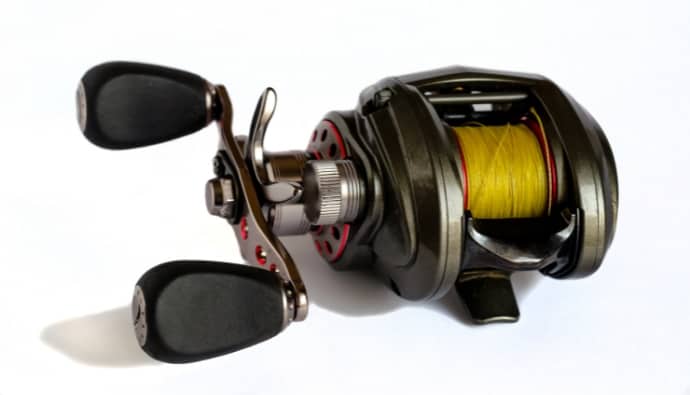



 Facebook
Facebook YouTube
YouTube